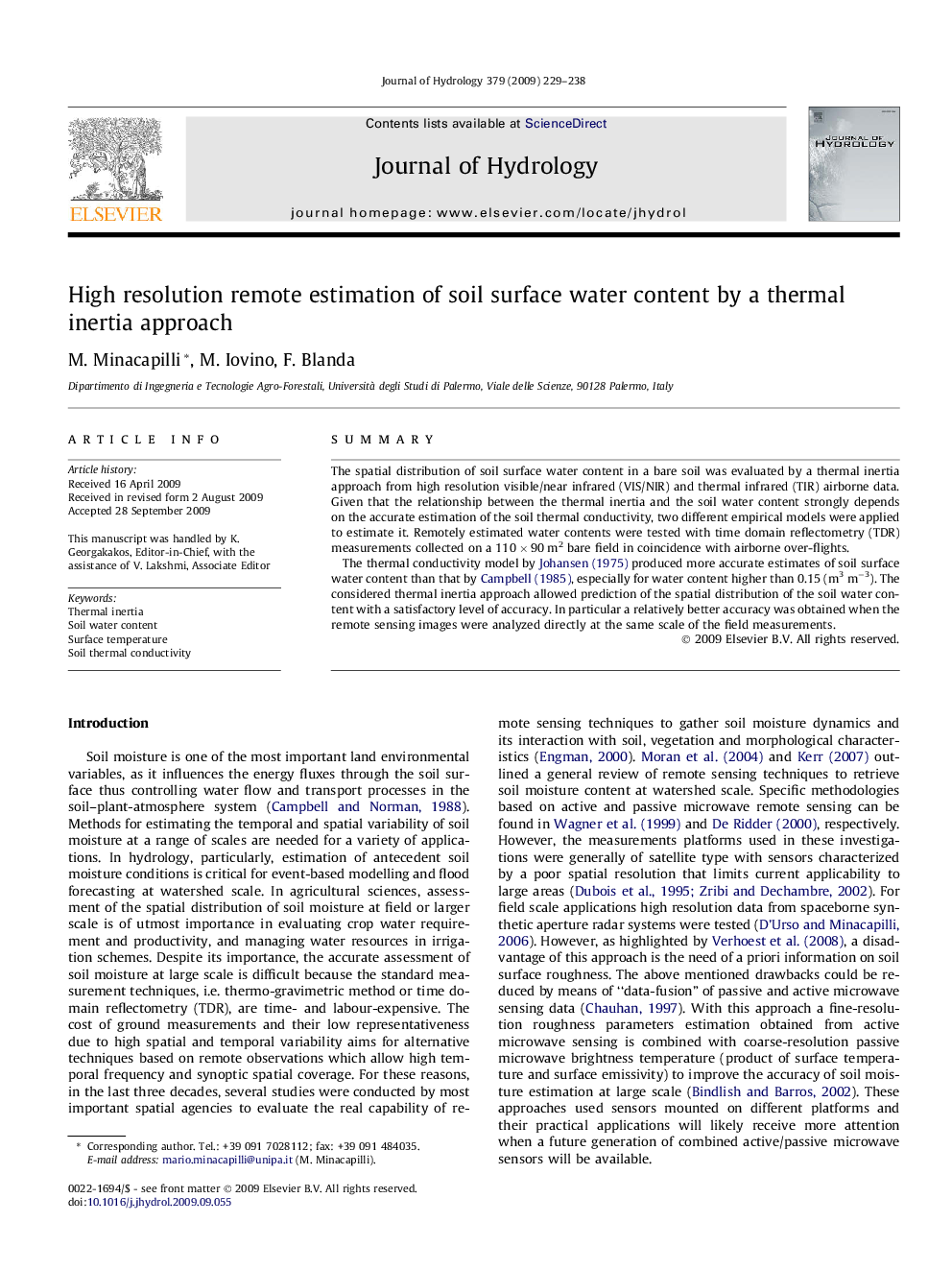| Article ID | Journal | Published Year | Pages | File Type |
|---|---|---|---|---|
| 4578568 | Journal of Hydrology | 2009 | 10 Pages |
SummaryThe spatial distribution of soil surface water content in a bare soil was evaluated by a thermal inertia approach from high resolution visible/near infrared (VIS/NIR) and thermal infrared (TIR) airborne data. Given that the relationship between the thermal inertia and the soil water content strongly depends on the accurate estimation of the soil thermal conductivity, two different empirical models were applied to estimate it. Remotely estimated water contents were tested with time domain reflectometry (TDR) measurements collected on a 110 × 90 m2 bare field in coincidence with airborne over-flights.The thermal conductivity model by Johansen (1975) produced more accurate estimates of soil surface water content than that by Campbell (1985), especially for water content higher than 0.15 (m3 m−3). The considered thermal inertia approach allowed prediction of the spatial distribution of the soil water content with a satisfactory level of accuracy. In particular a relatively better accuracy was obtained when the remote sensing images were analyzed directly at the same scale of the field measurements.
